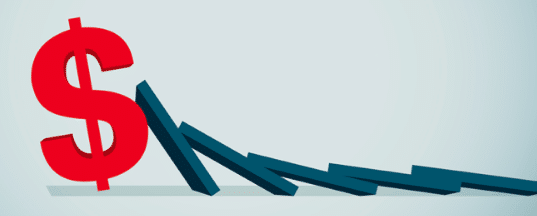We all remember the 2008 financial crisis and recession, as millions of people lost their jobs, homes, and ways of life. While a lot of factors contributed to this economic disaster, one term can cover nearly all of them: systemic risk. Let’s look at what it is and how it can impact your behavior as an investor.
What is Systemic Risk?
According to the CFA Institute, systemic risk is “the risk of a breakdown of an entire system rather than simply the failure of individual parts.” This could mean a lot of different things, but in finance, it refers to the risk of a cascading failure in the financial sector.1
Any financial system has some level of inherent risk, but policymakers seek to limit this risk by closely monitoring the market, analyzing global trends, and creating reforms to help protect people and their finances.
For example, the Obama Administration signed the Dodd–Frank Wall Street Reform and Consumer Protection Act into law in July 2010 as a response to the 2008 financial crisis. The idea behind this legislation was to make the US financial system safer for consumers and taxpayers by establishing new government agencies to oversee our financial system. While it’s impossible to limit all risk, there are steps that the government and consumers can take to prevent something like the 2008 financial crisis from happening again.2
How Systemic Risk Impacts Investors
While individual investors can’t protect themselves from systemic risk completely, looking at the concept does teach us a lot of important lessons about investing and risk tolerance. For example, you can use current events or your personal research to diversify your portfolio and hedge against potential risks.
In addition to analyzing current trends and market conditions, we can use this risk as motivation to diversify our assets. Most financial professionals will always recommend a diversified portfolio that’s aligned with your personal risk tolerance.
Systemic risk and market risk aren’t equivalent, but they do raise the question, “How much risk is too much?” The answer to this question depends on your own personal risk tolerance.
Looking at systemic risk also makes us more skeptical of companies that are “too big to fail.” For example, Lehman Brothers’ “size and integration” into the US economy made it a source of systemic risk. When the firm collapsed, it “created problems throughout the financial system and the economy.”3
This risky “too big to fail” ideology is one of the reasons why the financial crisis of 2008 happened, prompting individuals to do research on their own investment decisions. It’s dangerous to blindly trust any company, big or small, without doing the proper research.
As an investor, it’s important to understand our economy as a whole and how things like systemic risk impact our daily lives and investments. The 2008 financial crisis was a big wake-up call for Americans and politicians, as we realized that without the proper checks and balances in place, things can go horribly wrong.
But with diligent oversight, responsible companies, and educated investors, we can begin to protect ourselves from structural risk. Understanding systemic risk is a good way for investors to understand the overall impact of risk on their portfolios.
Award-winning CPAs and CFPs, the financial advisors at Outlook Wealth Advisors, offer a unique, holistic perspective most other firms simply cannot offer. They have assisted retirees and pre-retirees manage wealth and prepare tax-friendly retirement plans over 25 years. Email us at info@outlookwealth.com or call 281-872-1515 to get started.
- https://www.cfainstitute.org/en/advocacy/issues/systemic-risk
- https://www.cfainstitute.org/en/advocacy/issues/dodd-frank-rollback
- https://www.investopedia.com/terms/s/systemic-risk.asp


